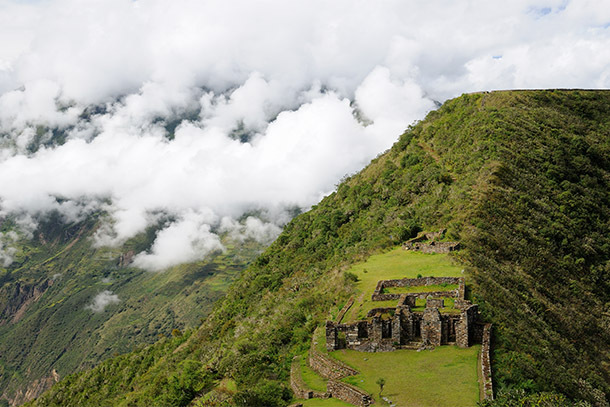The first bus to Machu Picchu leaves Peru's party-all-night tourist town, Aguas Calientes, at six in the morning. The line to be on it forms sometime after midnight, and by the time the sun pokes over the Andes, the fabled "Lost City of the Incas" looks less like one of the great wonders of the ancient world and more like a modern day Disney theme park.
Don't get me wrong. It's hardly Machu Picchu's fault that you'd barely raise an eyebrow if someone emblazoned the words "Welcome to Incaland" on a sign above the ticket gate. On its own, the 15th century city is everything you hope it will be: a sprawling maze of terraces and stonework, a mountaintop citadel 8,000 feet above the Urubamba River Valley, an ancient marvel. From a distance, it looks just like the postcards.
But up close ... ?
Elbow-to-elbow tourists. A relentless parade of buses. A five-star hotel and a dozen different Wi-Fi signals. It even has its own app. The disappointing truth is that while Machu Picchu is undoubtedly an awesome archaeological spectacle, it's also everything you secretly fear it might be: crowded, noisy, underwhelming. A tourist trap.
The Other Machu Picchu
But maybe I'm biased. I was already of two minds about visiting Machu Picchu before I booked my trip to Peru. On the one hand, how can you go to Peru and not see Machu Picchu? On the other, is there anywhere in South America that's more famous, more photographed, more Instagrammed? Part of me felt like I'd already experienced Machu Picchu before even setting foot in Peru.
I crave the kind of travel experiences that require trekking poles and a sturdy pair of hiking boots--which is why I rarely find myself among the selfie-stick-toting throngs of sightseers like the ones I saw at Machu Picchu. And it's why the lure of the world's most famous Inca city alone wasn't enough to get me on the plane to South America.
A few years ago I heard about another Inca city on a mountaintop. Like Machu Picchu, it was rediscovered by American explorer Hiram Bingham on one of his early expeditions to South America. And at 10,000 feet, Choquequirao ("cho-kay-kee-rao") is quite a bit higher than Machu Picchu--and a lot less accessible. Therein lay its appeal to me.
The traditional route to Choquequirao requires two days of hiking from the small village of Cachora, about four hours by car from Cusco. This is followed by another four to six days on foot at high altitude before returning to civilization via the Salkantay trek route. No cars, no hotels, no Wi-Fi. There aren't any other options for getting to Choquequirao, either.
You finish the trek on foot or on a stretcher--that's how my trip leader on the Choquequirao to Machu Picchu trek with G Adventures put it. He wasn't joking, although the truly desperate could hitch a ride on the back of a pack horse.
My guide's nickname was Rambo, and he didn't come by it ironically. "The Choquequirao trek is three times harder than the Inca Trail to Machu Picchu," he said at the outset. Then he reconsidered. "Maybe five times harder."
He wasn't joking about that, either.













_(720p).jpg)


 OFFICIAL HD MUSIC VIDEO.jpg)
.jpg)



























































































